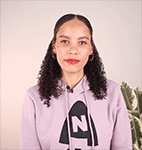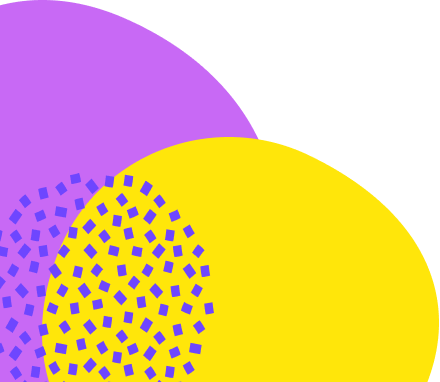Possessive Pronouns Examples Sentences


Do you have a tip or a fun exercise that can help him feel the difference between them in conversation? I think hearing examples from you would make a big difference.

Hi there
Thank you for your question.
That's a common hurdle for young learners! The difference between possessive adjectives (like "your") and possessive pronouns (like "yours") can be tricky to internalize in spoken language, even when they understand the grammatical rule. The key is to help him feel the missing noun when he uses the possessive pronoun incorrectly.
Here's a tip and a fun exercise, along with examples that you can use with him:
Tip: Emphasize the "Missing Noun"
When he says "This is your," gently and immediately (but not in a critical way) prompt him to think about what "your" is referring to.
Example Conversation:
Son: "Mom, this is your." You: "My what? My shirt? My book? When you say 'your,' it sounds like you're about to tell me what belongs to me. But if you say 'yours,' then we know it's already the thing we're talking about." Son: (Perhaps points to a toy) "This is your toy." You: "Ah, yes, this is your toy. Or, if we've already been talking about the toy, you could just say, 'This is yours.' See how 'yours' already has the 'toy' built into it?"
The idea is to draw attention to the fact that "your" needs a noun following it, while "yours" stands alone.
Fun Exercise: The "Whose Is It?" Game
This game encourages him to actively use both forms in context and hear them naturally.
Materials:
- A few small, everyday objects (e.g., a ball, a book, a pencil, a cup)
- You and your son (and maybe another family member if available)
How to Play:
- Start with Possessive Adjectives (Your/My/His/Her/Its/Our/Their):
- You pick up an object. "This is my ball."
- Hand an object to him. "This is your book."
- Point to an object belonging to someone else (or a make-believe person/pet). "That is his pencil." (or "That is the dog's bone.")
- He then makes a statement using the possessive adjective.
- Transition to Possessive Pronouns (Yours/Mine/His/Hers/Its/Ours/Theirs):
- Now, pick up an object and hold it up.
- You: "Whose is this?"
- Son: (If it's yours) "It's your..." (This is where you can guide him.)
- You: "It's mine! This ball is mine." (Emphasize "mine")
- You: (Hold up an object that belongs to him) "Whose is this book?"
- Son: "It's my..."
- You: "It's yours! This book is yours."
- The Core of the Game: The Question & Answer Swapping:
- You pick an object. "Whose is this?" (Encourage him to ask too)
- He answers, using the correct pronoun. For example, if it's his, he says, "It's mine!" If it's yours, he says, "It's yours!"
- Then, you can both make a follow-up statement using the possessive adjective.
- Son: "It's mine!"
- You: "Yes, that's your book."
- You: "It's yours!"
- Son: "Yes, that's my book."
Why this works:
- Repetition in Context: He'll hear and use the words repeatedly in natural, conversational settings.
- Active Participation: He's not just listening; he's actively producing the language.
- Immediate Feedback: You can gently correct him in the moment without making it feel like a grammar lesson.
- Focus on the "Whose": The "Whose is it?" question naturally leads to the possessive pronouns, as they answer that specific question ("Mine," "Yours," "His," etc.).
- Connecting Adjective and Pronoun: By following up a pronoun answer with the corresponding adjective ("It's mine!" -> "That's your book"), you reinforce the relationship between the two forms.
Make it fun! Use silly voices, make sound effects, or race to see who can identify the owner first. The more relaxed and enjoyable the activity is, the more likely he'll internalize the correct usage without feeling pressured. Good luck!
The core idea is:
- "Your" needs a noun right after it. (e.g., your car, your turn, your idea)
- "Yours" stands alone, without a noun after it. (e.g., That car is yours. The turn is yours. The idea was yours.)
Quick Tip: "Your" needs a Pal (a Noun)
When he says "This is your," gently ask: "My what? Your what?" This helps him realize "your" is waiting for a noun.
Example:
- Son: "This is your."
- You: "My what? My ball? (He'll probably say 'ball'). Yes, it's your ball. Or, if we're just talking about the ball, you can say, 'It's yours.' "
Short Exercise: The "It's Mine/Yours" Game
How to Play:
- Grab a few small things.
- Hold up an item.
- You: "Whose is this?"
- He answers:
- If it's his: "It's mine!"
- If it's yours: "It's yours!"
- If it's someone else's: "It's his/hers/theirs!"
Then, you can quickly say the other form to reinforce:
- Son: "It's mine!"
- You: "Yes, that's your book."
- Son: "It's yours!"
- You: "Yes, that's my book."
This game focuses on him using "mine" and "yours" correctly in response to a direct question, which is often where the confusion happens. Keep it quick and fun!
I hope this helps and I look forward to any further questions you may have.







